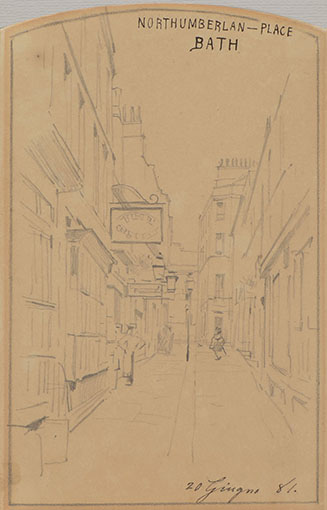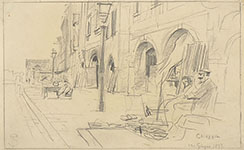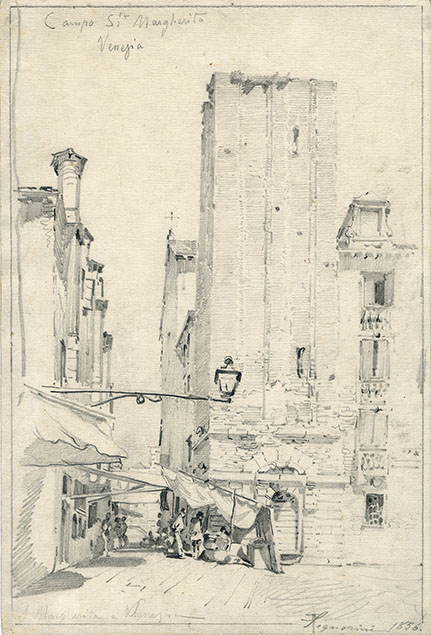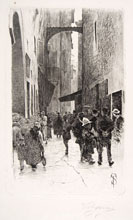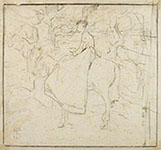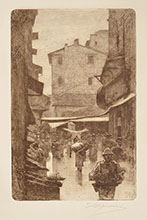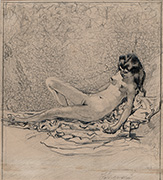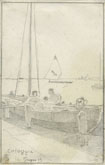(Florence 1835 - 1901)
VIEW OF NORTHUMBERLAND PLACE, BATH, 1881, 1881
Black chalk, 180 x 118 mm. Titled and dated by the artist in black ink NORTHUMBERLAN-PLACE (sic) / BATH / 20 Giugno 81. On the verso stamped number 1049.
In his Lettera informativa, a true artistic autobiography presented to the Presidente della R. Accademia di Belle Arti in Florence in 1892, Signorini, speaking about his travels to England and France, writes:
Tornato nel 1881 vendetti il mio quadro del Ponte Vecchio a un negoziante di Bath, poi coll'amico Giordano mi portai di nuovo a Parigi e Londra e di lì fui nella Contea di Somerset a Bath dove rimasi un mese lavorando con l'amico Cecchi per il negoziante Visart che m'aveva comprato il Ponte Vecchio. Di là, traversata l'Inghilterra, passai in Scozia e in Edimburgo, dove raggiunsi il Giordano, lavorai con lui moltissimo per le vie di quella città e a Leith e Glasgow e a North Berwick. The letter was originally published by Enrico Somarè in 1926, but it is now available also on line.
Other drawings executed by Signorini in England in 1881 have been exhibithed and published in 1969, see MOSTRA DI DISEGNI DI TELEMACO SIGNORINI, exhibition catalogue, Rome, Galleria Nazionale d'arte moderna, April-May 1969; cat. nos. 204-215.
It should be noted that today Northumberland Place is not very different from what it was in 1881
Signorini was a writer, theoretician and the spokesman for the Macchiaioli. He was also the first of the group, together with Borrani, to paint outdoors. Signorini was a passionate free spirit, who spent most of his life wandering in Italy and the capitals of Europe, always eventually returning to Florence. He frequently traveled to Paris and London, to sell and exhibit his works, at the Royal Academy and the Grosvenor Gallery in London, and with the dealers Goupil and Reitlinger in Paris. He also visited Boldini and De Nittis in Paris and became interested in the work of Manet and Degas. Signorini's style was unique among the Macchiaioli. His interest in nature and landscape was more objective and analytical. For a time his palette was influenced by the Impressionists, but in his later period he returned to purer color. Signorini was a splendid draftsman and printmaker.
